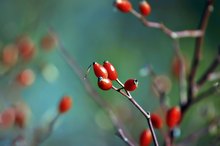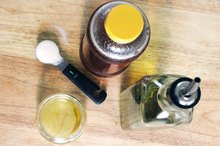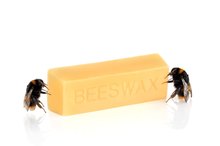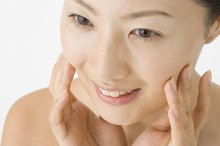How to Make Bee Pollen Face Cream
Bee pollen is used in a range of natural supplements and skincare products because of its high levels of antioxidants and vitamins. A nutritional analysis of bee pollen from Durham's Bee Farm shows that it contains 28 minerals essential to human health. According to a monograph in the Natural Medicine Comprehensive Database, bee pollen is used for softening and for soothing skin eruptions 1.
This bee pollen face cream requires bee pollen extract, found in health food stores or online. Using the extract instead of bee pollen grains will prevent clumping in your final product. This recipe makes a thick, smooth cream that that can be applied to the face.
Preparation
Melt the sweet almond oil, coconut oil, and beeswax in the double boiler. Use low heat and stir gently with a spoon as the oils merge. Allow the oil mixture to cool while you move on to Step 2, but do not allow the oils to solidify.
How to Make Face Cream Using Rosehip Oil
Learn More
Pour distilled water, bee pollen extract, aloe vera, and vitamin E oil in medium glass or stainless bowl. Stir gently. Transfer the mixture to the blender if you are not using a stick blender. If using a stick blender, make sure the mixture is in a bowl large enough to accommodate the oil mixture.
In a slow stream, pour the entire oil mixture into the bowl of ingredients or blender jar while running your blender. The consistency will be thin if the oil is still hot. A cooler but still warm oil mixture will produce a creamier consistency. Turn off the blender once the cream is completely smooth.
How to Make Homemade Lip Scrub
Learn More
Arrange your product jar or jars on a dishcloth and pour the cream inside. Fill all the way to the top to allow a small amount of settling when the cream cools entirely. Lid, label and let sit for 24 hours before using. To avoid spoilage, store the cream in your refrigerator.
Tips
You can substitute wheat germ oil for the vitamin E oil. Both oils work as preservatives.
Beeswax is usually sold in one-ounce bars. Cut a bar in half to obtain the 1/2 ounce needed for this recipe.
Use only pure aloe vera; avoid any aloe vera byproducts.
Warnings
Do not use if you are allergic to bee stings or pollen.
- Melt the sweet almond oil, coconut oil, and beeswax in the double boiler.
- Arrange your product jar or jars on a dishcloth and pour the cream inside.
Related Articles
References
- Natural Medicines Comprehensive Database: "Bee Pollen."
- American Academy of Allergy, Asthma & Immunology. NAB Pollen Counts: Counting Stations.
- Schmidt CW. Pollen Overload: Seasonal Allergies in a Changing Climate. Environ Health Perspect. 2016;124(4):A70-5. doi:10.1289/ehp.124-A70
- Geller-bernstein C, Portnoy JM. The Clinical Utility of Pollen Counts. Clin Rev Allergy Immunol. 2018. doi:10.1007/s12016-018-8698-8
- Chapman JA. How Relevant Are Pollen and Mold Spore Counts to Clinical Practice?. Ann Allergy Asthma Immunol. 2000; 84:467-8. doi:10.1016/S1081-1206(10)62501-X
- Portnoy JM. What Do Pollen Counts Mean?. Ann Allergy Asthma Immunol. 2004;93:109-110. doi:10.1016/S1081-1206(10)61460-3
Resources
- Jeanne Rose, Herbal Body Book: The Herbal Way to Natural Beauty for Men and Women (2000), Frog Books.
Writer Bio
Amy Stanbrough is a writer of fiction and nonfiction. Her work has appeared in "Bust," "Woman's World," "Southern Exposure" and many other publications. Stanbrough holds an M.F.A. in creative writing from George Mason University.









